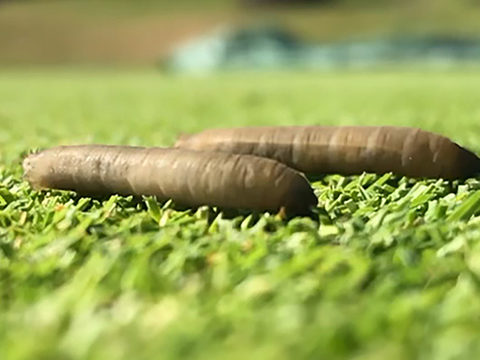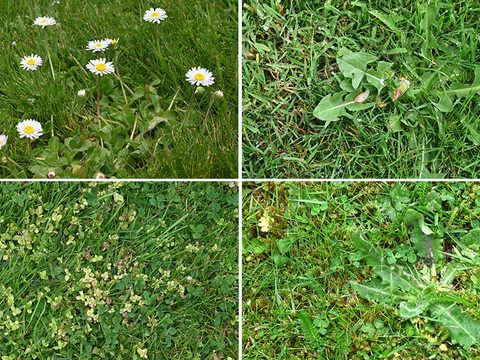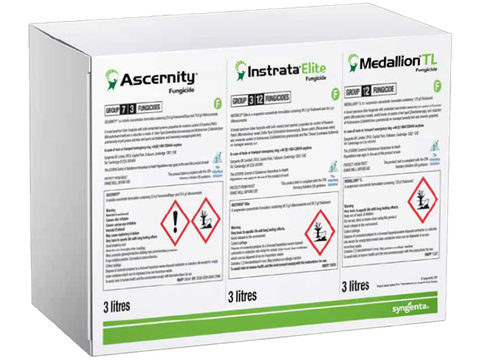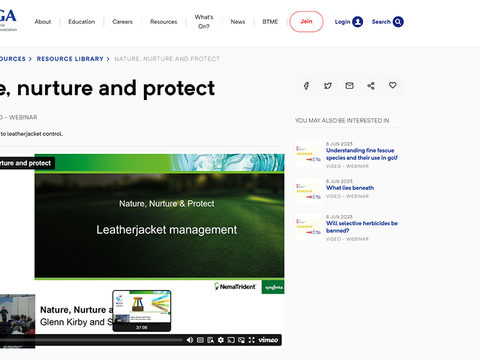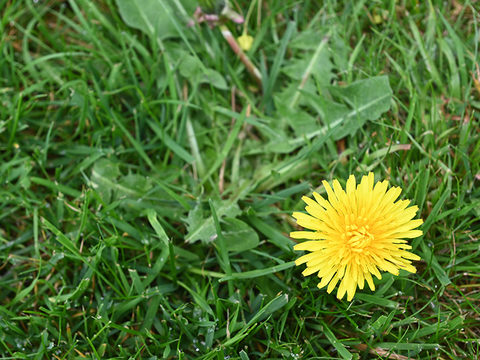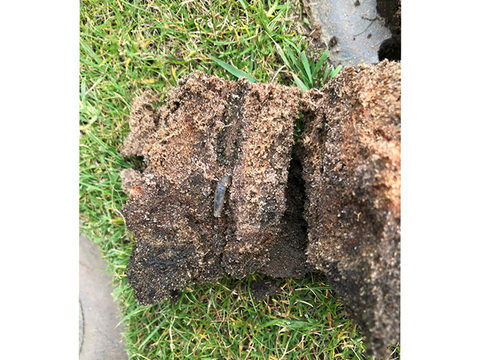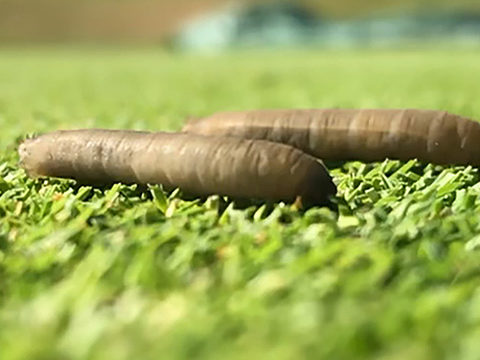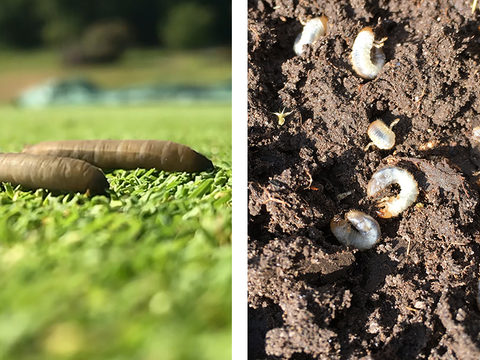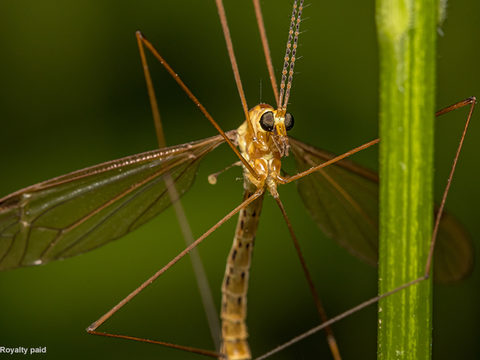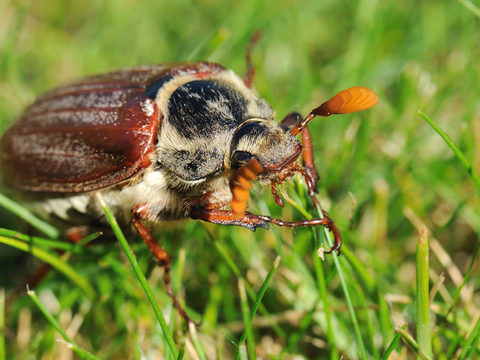Primo Maxx myths busted

Recent events have thrown the issue of labour availability for golf course management into sharp focus, particularly to maintain mowing regimes for turf quality and plant health. It has also increased scrutiny on every input cost and justification.
The use of Primo Maxx II, to reduce the burden of mowing through a period of reduced staffing and social distancing, has been a positive action.
Watch the BIGGA Continue to Learn Webinar - 'How to get the best from PGRs'
Available now free for all turf managers
That has already triggered an ongoing Syngenta and ICL ‘Turf management under lockdown’ research project at STRI - to evaluate the techniques and implications for prolonged management under reduced intensity regimes. The work will provide ongoing practical advice for greenkeepers and agronomists on a weekly basis.
Its findings will be of immense value and support now, and for the future. As the industry moves beyond Covid-19, all the aspects of savings on labour time and costs, as well as turf health and playability, will remain equally applicable.
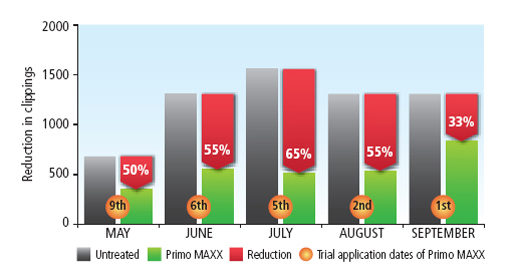
Repeated Primo Maxx trials, in the UK and around the world, have shown a typical reduction in mowing requirement and clipping yield of between 20% and 40%, but in some instances as much as 65% during the season - depending on grass species and growing conditions. Alongside that, there have been the associated reductions in costs of mowing and machinery.
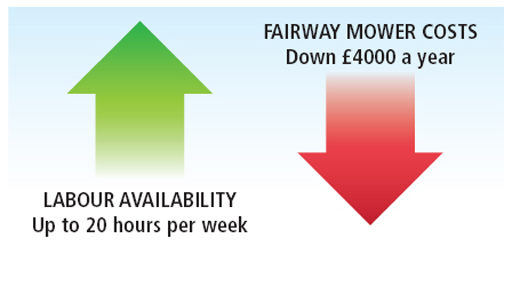
Furthermore, as one of the most intensively researched turf input products, its effects on plant physiology and turf quality have been rigorously investigated. But with the huge weight of research behind its use, it can be difficult to tease out the facts applicable to UK situations.
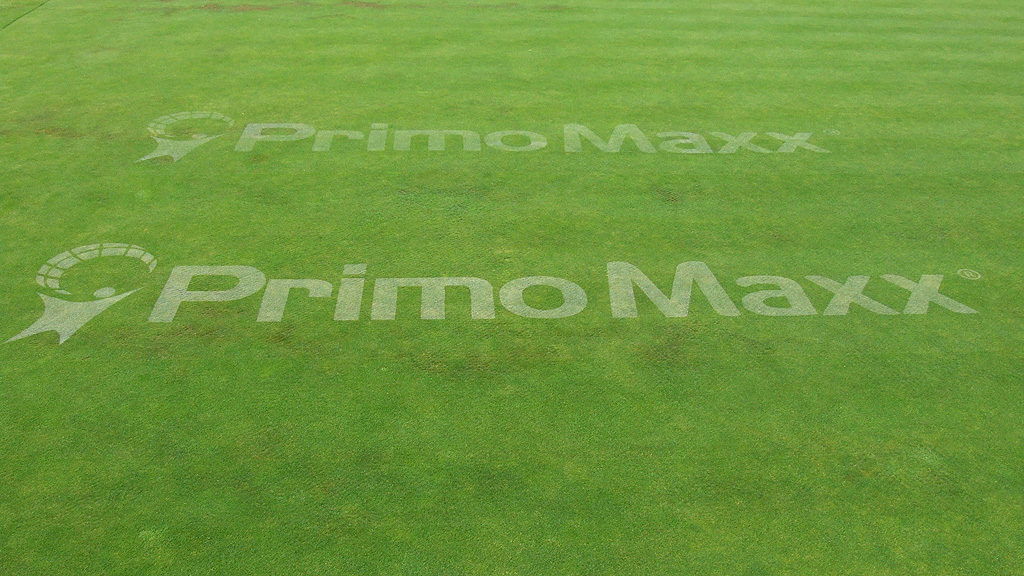
Can we increase rates to get longer PGR effects?
The recommendations for Primo Maxx II does give great flexibility in rates that can be applied, subject to the label approval for maximum application. And there was some early trials research that did show that high rates would give a prolonged effect.
However, as the product naturally degrades in the environment, which influences its suppression of gibberellic acid thereby reducing leaf growth, doubling the rate of application will not simply double the length of regulation.
Trials at Wisconsin University in the US indicate that there was a threshold for PGR effect, above which higher rates gave limited further reduction in grass growth, on bentgrass greens.
The trial did show that with turf maintained at a longer height of cut – at six mm compared to three mm – there was consistently greater levels of regulation and a 50% greater response of more regulation from higher application rates. That could influence results on greens currently maintained at higher cut levels, or for applications on fairway turf.
In practice, if the PGR is being used in a programme, each top-up keeps the turf in a steady state.
Regular application, such as fortnightly treatments as part of a programme, for example, has been shown to give the most consistent results, irrespective of the application rate. It has shown there is more to be gained for consistent results and longevity by utilising effective intervals between applications, than by increasing the rates.
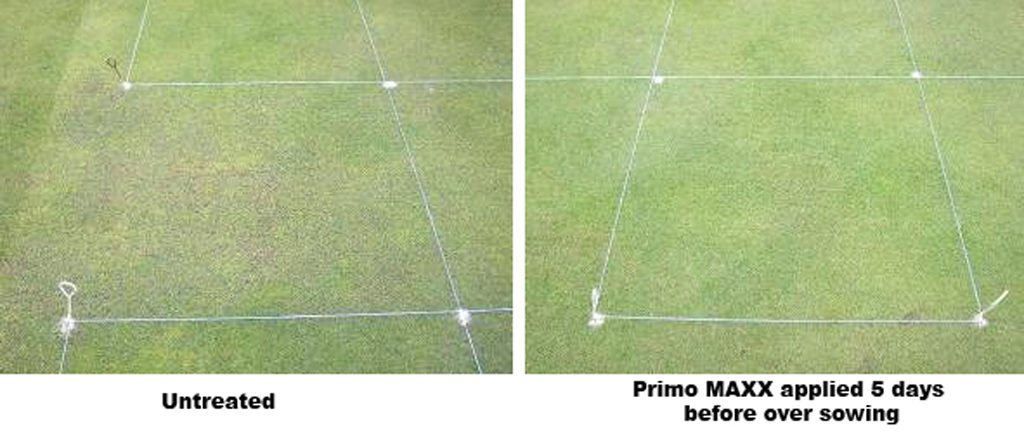
Will PGR effects be reduced as temperatures warm up?
The duration of Primo Maxx effect is largely influenced by plant metabolic activity, which is a factor of temperature, and other growth conditions. As conditions warm up for faster growth, product degradation is greater and trials have shown application would normally be required more regularly.
Models for PGR reapplication focus on temperature – through Growing Degree Days (GDD) – but assume all other factors remain constant for growth. Whilst that is typically true for managed greens, for example, if other factors limit growth, such as lack of light, moisture or nutrition, then naturally occurring effects may influence PGR timing.
That could also have an effect for less intensively managed surfaces being held until play can resume, or for fairway applications.
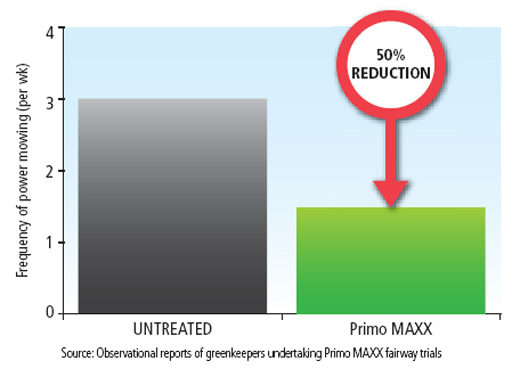
Does that change using GDD?
Research has shown that GDD can be a useful guide for PGR application interval - providing any results are interpreted and applied according to individual course conditions. (See last month’s GI Insight - GDD explained)
Whilst most models indicate a PGR interval of 150 to 200 GDD, that was typically generated in the US in different conditions and grass species, often using different calculation parameters. In reality, each course would have a slightly different optimal GDD for PGR reapplication in their situation. Furthermore, GDD figures could actually be quite different across the course – from a sunny south facing green, compared to a northerly frost pocket hollow, for example.
A new Syngenta GDD calculator - providing data on more accurate hourly temperature changes, compared to simply maximum and minimum values – is set to provide an easy to use guide. It also has an informative predictive element, to forecast when elected GDD points are expected to be reached and enable more proactive decisions.
Furthermore, the current STRI research project will also be validating the new Syngenta GDD calculator for PGR interval application, under UK conditions and on cool season grasses. That will make it easier for greenkeeprs to tailor the GDD information to their own course situations for future recommendations
Do we still need to feed with PGR application?
It has always been recommended to apply Primo Maxx in conjunction with some additional nutrition. Turf is still actively photosynthesising whilst in regulation - in fact research has shown it is actually more efficient at doing so - only the energy is diverted into root mass reserves, rather than vertical leaf growth.
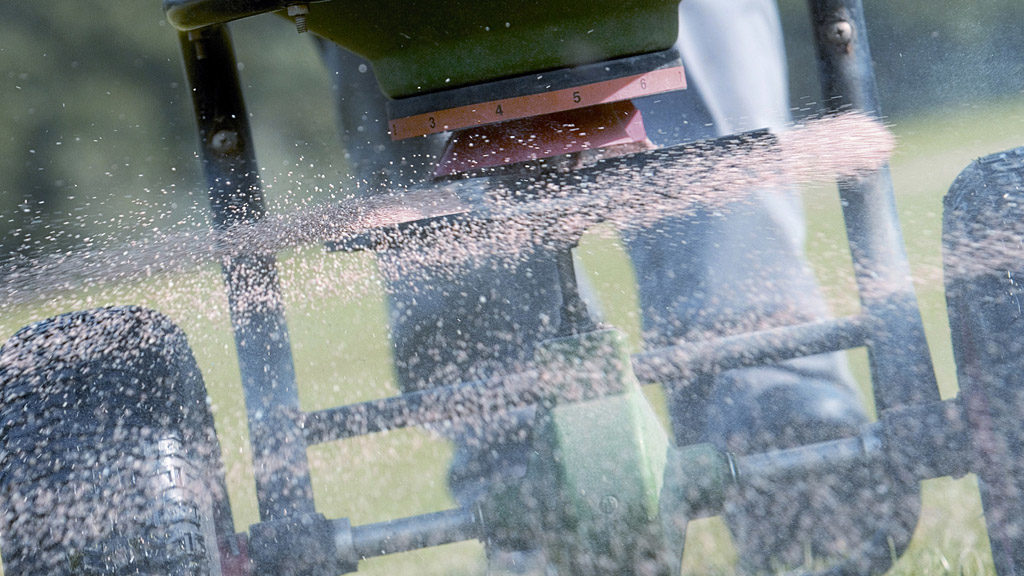
Since most PGR applications are made along with the nutrition programme that would normally be sufficient. Where nutrition may have been cut back during closures this season, there may be some transient yellowing effects on plants from PGR application, particularly if started at higher rates, but this should soon be outgrown and no long lasting effects.
There is no evidence that additional N helps with uptake into the plant. But, as with any systemic product, be that fungicide or herbicide, effects are generally enhanced when plants are actively growing.
Will using iron effect the PGR results?
Some greenkeepers have looked to use Fe to maintain turf health under less intensive management regimes, until courses can be brought back into play. Research in the US has shown there is a positive result from a combination of Primo Maxx and Fe products, where there is a label recommendation.
There is some evidence that Fe could affect stomatal opening in specific crops, such as cauliflower, but no suggestion that this would be the case or have any effect in turf.
The only caveat would be on application and product compatibility, but there has been no issues recorded in the UK.

Will turf quality decline in the autumn from PGR use all summer?
Research by STRI has shown prolonged use of Primo Maxx has no negative effects on turf quality. Trials in the US have observed PGR use was effective in reducing the incidence of etiolated growth in some turf grass species.
Since the effect is regulating a naturally occurring process of gibberellic acid production in the plant, any changes in growth habit only occur whilst the active is present, and then gradually dissipate.
The only effect that may be seen is that when the Primo Maxx programme ends, the natural rebound effect has been noted to see greater compensatory gibberellic acid production. That can be effectively managed by the gradual withdrawal of PGR programmes, or as is increasingly practiced on greens, to maintain PGR use for longer in the autumn, albeit at lower rates and longer intervals.
Trials in the Nordics have shown that winter survival is significantly enhanced by Primo Maxx programmes through the growing season and into the autumn, attributed by STERF researchers to the increased build-up of carbohydrate energy reserves in the greater root mass.
The detailed science and vast amount of user experience behind Primo Maxx use indicates it has an extremely valuable role to reduce labour requirement And costs of managing turf in the short term, and in the future once courses are back in full management and play.
Read the back library of Greenkeeper International InSight features


